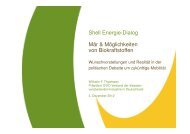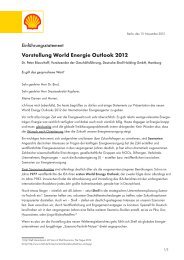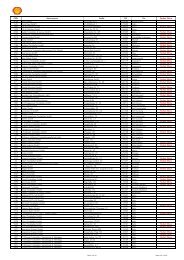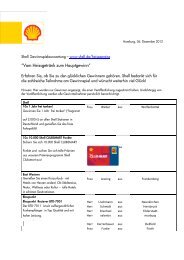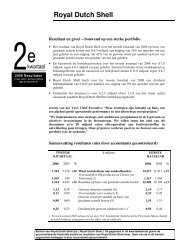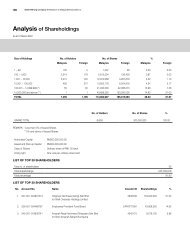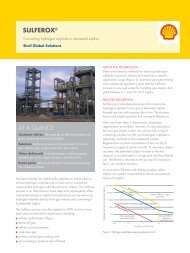ENVIRONMENTAL STATEMENT BARDOLINO DEVELOPMENT
ENVIRONMENTAL STATEMENT BARDOLINO DEVELOPMENT
ENVIRONMENTAL STATEMENT BARDOLINO DEVELOPMENT
Create successful ePaper yourself
Turn your PDF publications into a flip-book with our unique Google optimized e-Paper software.
Bardolino Development Environmental Statement<br />
3.7 PRODUCTION, UTILITY AND MAINTENANCE OPERATIONS<br />
3.7.1 Bardolino Production Profiles<br />
The Bardolino field will produce gas and oil over an expected field life of 10 years. Figure<br />
3.10 shows the forecasted high case (P10 or 10% likelihood of occurring), base case (P50 or<br />
50% likelihood of occurring) and low case (P90 or 90% likelihood of occurring) production<br />
profiles for Bardolino.<br />
The high case ultimate recovery for production from the Bardolino development well is 11.96<br />
billion scf of gas and 13,253 million bbls of oil. As the reservoir pressure declines throughout<br />
field life the gas oil ratio (GOR) is expected to increase. At the beginning of field life the GOR<br />
is expected to be 870 scf/stb, and this will increase to 1,599 scf/stb at the end of field life.<br />
Figure 3.10: Bardolino development production forecast<br />
Oil production (Mbbls/day)<br />
10000<br />
9000<br />
8000<br />
7000<br />
6000<br />
5000<br />
4000<br />
3000<br />
2000<br />
1000<br />
0<br />
2009 2010 2011 2012 2013 2014 2015 2016 2017 2018 2019 2020<br />
3.7.2 Production Operations<br />
Field life (years)<br />
High case oil production<br />
Base case oil production<br />
Low case oil production<br />
High case gas production<br />
Base case gas production<br />
Low case gas production<br />
At present it is anticipated that bringing the Bardolino development on stream may result in<br />
some impacts to the operational performance of the Nelson platform. The addition of<br />
Bardolino fluids through the Nelson process may have an adverse impact on the amounts of<br />
dispersed oil in the produced water discharged at Nelson (discussed further in Section 3.7.3).<br />
In addition, the Bardolino development will increase the volume of the subsea system to<br />
Howe, which will extend the time taken for “blowdown” of the line (de-pressurisation of the<br />
system by venting of gas) when this is required for operational or maintenance reasons.<br />
3.7.3 Produced Water Handling<br />
Oil and gas extracted from North Sea reservoirs can contain substantial quantities of water,<br />
termed produced water. This water can arise from the original formation water, as well as<br />
from water injected into the reservoir to maintain reservoir pressure; the water is then<br />
extracted from the reservoir along with the oil and gas that is removed. Produced water<br />
contains small amounts of natural hydrocarbons, and may also contain traces of dissolved<br />
components such as metals and production chemicals. It must be treated to reduce the<br />
concentration of hydrocarbons to less than 30mg/l before discharge to the sea is permitted.<br />
At the Nelson platform, hydrocyclones and a produced water flash drum are used to separate<br />
produced water from oil and clean it, prior to its re-injection into the reservoir or disposal overboard.<br />
The Nelson platform was required to reduce the quantity of oil discharged to sea to<br />
meet the 2006 Oslo Paris Convention (OSPAR) agreement reductions. Produced Water Re-<br />
April 2008 Page 3-25<br />
9<br />
8<br />
7<br />
6<br />
5<br />
4<br />
3<br />
2<br />
1<br />
0<br />
Gas production (MMscf/day)


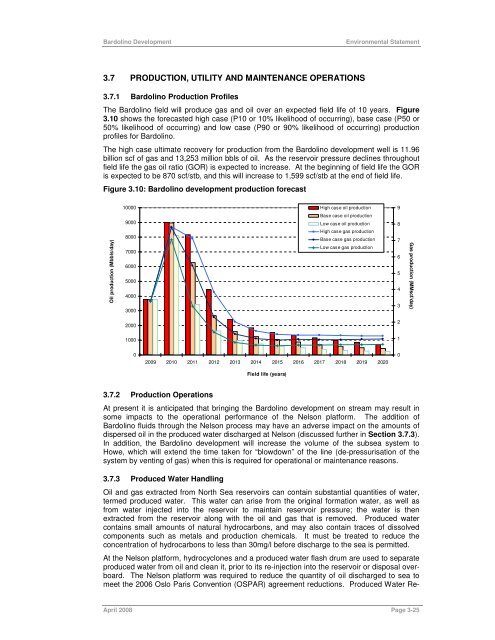
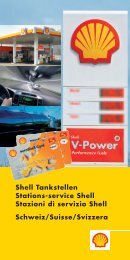
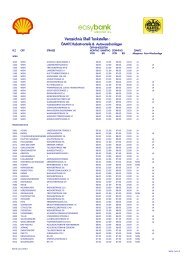
![Download Shell AutoGas Stationen [Stand: Januar 2013] (PDF](https://img.yumpu.com/9982753/1/190x245/download-shell-autogas-stationen-stand-januar-2013-pdf.jpg?quality=85)
